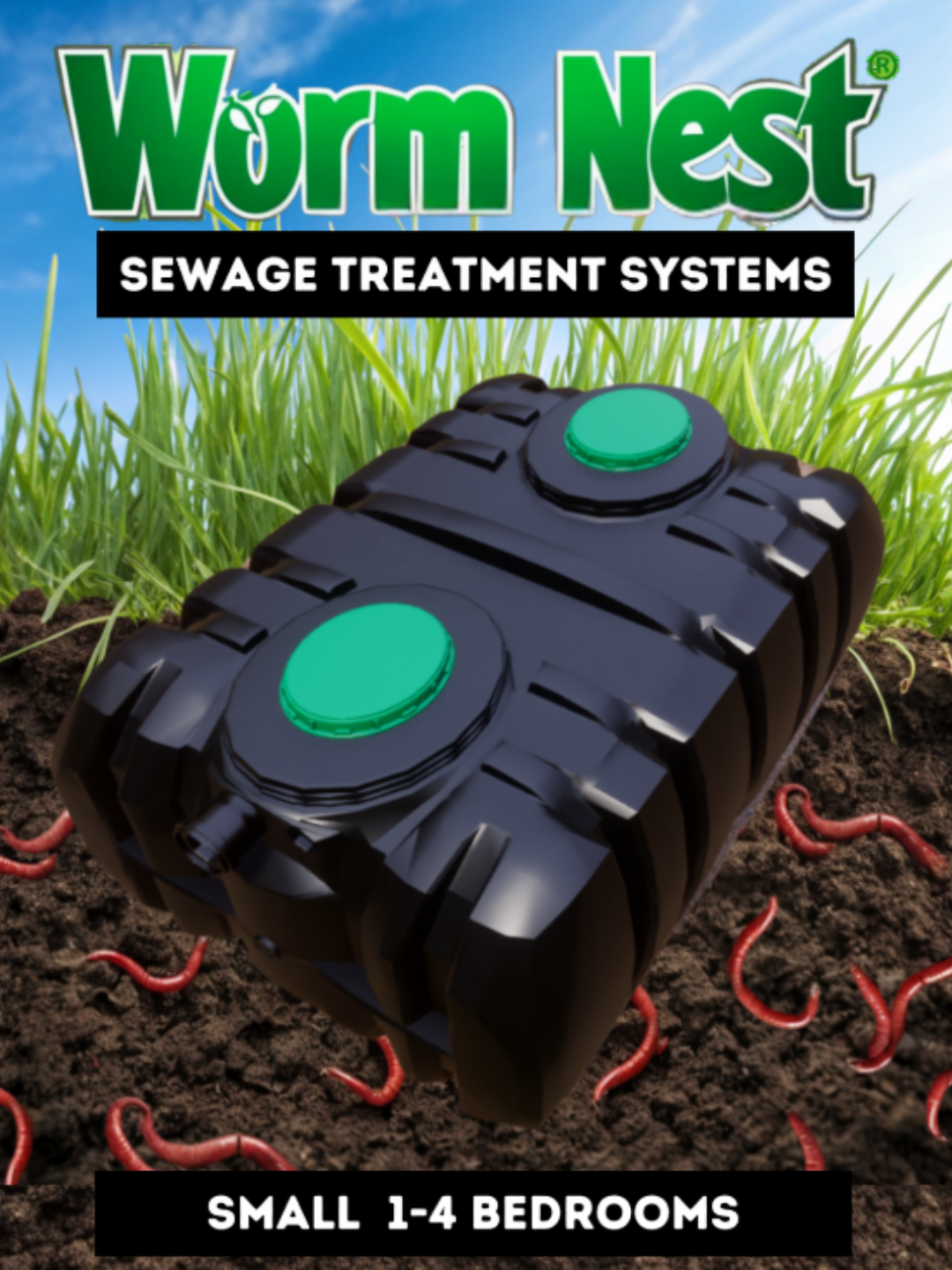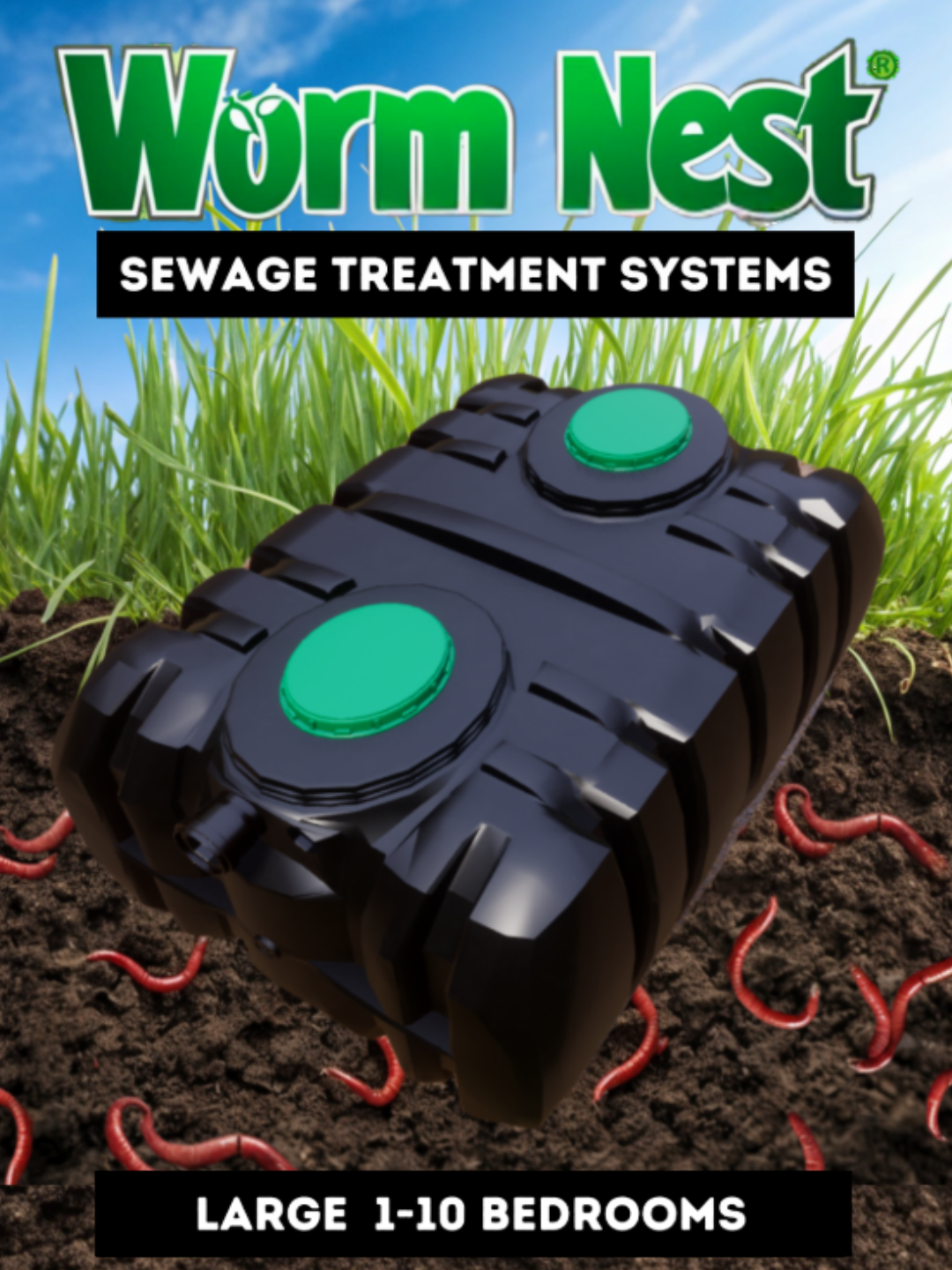Sewage Treatment Plants: Your Complete Guide to UK Wastewater Solutions
Welcome to septictank.co.uk, where we offer the best and most affordable sewage treatment plants for domestic properties, businesses, glamping sites, mobile homes, and camping sites across the UK. If you’re searching for “sewage treatment plants” to manage wastewater effectively, our advanced systems provide reliable, compliant, and cost-effective solutions. This in-depth guide covers everything you need to know about sewage treatment plants, including sizing, science, installation, maintenance, and real customer experiences, ensuring you make the right choice for your property.
In the UK, sewage treatment plants are vital for properties not connected to mains sewers, particularly in rural areas. Unlike septic tanks, which offer basic treatment, sewage treatment plants deliver advanced processing, producing effluent clean enough for watercourse discharge. Whether you’re a homeowner, business owner, or running a leisure site, our solutions at septictank.co.uk are designed for efficiency and durability, backed by expert advice.
What Are Sewage Treatment Plants?
Sewage treatment plants are advanced systems that treat wastewater from households, commercial properties, or leisure facilities, producing high-quality effluent safe for environmental discharge. In the UK, they’re essential for off-grid properties, ensuring compliance with the Environment Agency’s general binding rules, which require effluent to meet 20:30:20 standards for biochemical oxygen demand (BOD), suspended solids, and ammoniacal nitrogen. Unlike septic tanks, which settle solids and discharge to a soakaway, sewage treatment plants use biological processes for superior treatment, often eliminating the need for a drainage field.
At septictank.co.uk, we offer a range of systems, including the Worm Nest Sewage Treatment Plant, perfect for small households, and larger units for businesses or campsites. Our plants are engineered for low maintenance and high performance, making them a top choice for UK customers seeking sustainable wastewater solutions.
How Sewage Treatment Plants Work
Sewage treatment plants process wastewater through multiple stages to achieve clean effluent. Understanding these stages highlights why they’re preferred over septic tanks for many applications. Here’s how they operate:
- Primary Treatment: Wastewater enters a settlement chamber, where solids sink to form sludge, and lighter materials like grease float. This reduces the organic load for further processing.
- Secondary Treatment: The biological stage uses aerobic bacteria to degrade organic matter. Methods like activated sludge (aeration tanks) or trickling filters support microbial activity, breaking down pollutants effectively.
- Tertiary Treatment: Optional polishing removes residual nutrients or pathogens via filtration or disinfection, ensuring compliance with strict UK standards.
Unlike septic tanks, which rely on anaerobic digestion and require a drainage field, sewage treatment plants produce cleaner effluent, often suitable for direct discharge to streams or rivers, subject to permits. Our systems at septictank.co.uk feature advanced aeration for optimal bacterial performance, ensuring reliable treatment for your property.
Choosing the Right Sewage Treatment Plant: Sizing Guide
Selecting the correct sewage treatment plant size is critical for efficiency and compliance. In the UK, sizing is based on population equivalent (PE), estimating wastewater production. British Water provides clear guidelines:
| Property Size | Population Equivalent (PE) |
|---|---|
| 1 bedroom | 2 PE |
| 2 bedrooms | 4 PE |
| 3 bedrooms | 5 PE |
| 4 bedrooms | 6 PE |
| Each additional bedroom | +1 PE |
For instance, a 4-bedroom home needs a 6 PE system, like our Worm Nest at septictank.co.uk. Commercial properties, such as glamping sites, require custom calculations based on guest numbers or staff. Key sizing factors include:
- Wastewater Volume: Higher occupancy increases demand.
- Site Conditions: Space and soil type impact installation.
- Budget: Larger systems cost more but ensure compliance.
We offer free sizing consultations at septictank.co.uk, ensuring the perfect fit for homes, businesses, or campsites. Our compact, powerful systems balance performance and affordability.
Installation and Maintenance of Sewage Treatment Plants
Proper installation and maintenance ensure your sewage treatment plant’s longevity and compliance. Here’s what to expect:
Installation
Professional installation is recommended to meet Environment Agency standards. The process involves site assessment, excavation, and drainage connection. Considerations include ground conditions, watercourse proximity, and permits. At septictank.co.uk, we partner with certified installers for a seamless setup.
Maintenance
Regular maintenance keeps your system efficient. Annual servicing checks components like air blowers, while desludging (sludge removal) is needed every 1-2 years, depending on usage. Licensed carriers must handle sludge disposal, per UK regulations. Our low-maintenance systems at septictank.co.uk simplify upkeep with accessible designs.
The Science Behind Sewage Treatment Plants
Sewage treatment plants rely on microbiology and chemistry to purify wastewater. The primary process is aerobic digestion, where bacteria break down organic matter in oxygen-rich environments. Key scientific principles include:
- Aerobic Digestion: Microbes convert organic compounds into CO2, water, and biomass, reducing BOD.
- Nitrification: Ammonia is oxidized to nitrates, lowering nitrogen levels.
- Denitrification: Nitrates are reduced to nitrogen gas in low-oxygen zones, enhancing effluent quality.
Optimal conditions—temperature (10-35°C), pH (6.5-8.5), and oxygen—are essential for bacterial efficiency. A 2017 study in ScienceDirect (Comparison on efficiency) reported up to 95% pollutant removal in modern plants, underscoring their effectiveness. Our systems at septictank.co.uk use advanced aeration to maximize treatment quality.
Frequently Asked Questions (FAQ) About Sewage Treatment Plants
We’ve answered common questions to help you choose the best sewage treatment plant for your needs.
What’s the difference between sewage treatment plants and septic tanks?
Septic tanks provide primary treatment, settling solids and discharging to a drainage field. Sewage treatment plants offer advanced biological treatment, producing cleaner effluent for watercourse discharge, often without a soakaway. Our systems at septictank.co.uk suit both needs, with plants ideal for stricter regulations.
How do I size a sewage treatment plant?
Sizing uses population equivalent (PE). For homes, refer to the table above (e.g., 6 PE for 4 bedrooms). Businesses need estimates based on usage, like 12 PE for a small campsite. We provide free sizing advice at septictank.co.uk.
How often should I service my plant?
Annual servicing checks mechanical components. Desludging occurs every 1-2 years, depending on load. Regular maintenance ensures compliance and prevents issues.
Can I install a plant myself?
DIY is possible, but professional installation ensures compliance with UK rules. Our team at septictank.co.uk connects you with experts for a smooth process.
What are the running costs?
Small domestic plants cost £50-£100/year in electricity (for air blowers). Maintenance contracts start at £150/year, offering value and reliability.
Are sewage treatment plants eco-friendly?
Yes, they produce high-quality effluent, minimizing pollution. Compliance with 20:30:20 standards ensures environmental safety.
Can I use a plant for a glamping site?
Absolutely. Our scalable systems at septictank.co.uk handle variable guest loads, perfect for glamping or camping sites.
What permits are required?
No permit is needed for drainage field discharges under 2m³/day, per Environment Agency rules. Watercourse discharges over 5m³/day require permits. We guide you at septictank.co.uk.
How long do plants last?
Quality systems last 20-30 years with proper care. Our durable units offer excellent longevity.
What if my plant overflows?
Overflows are rare with correct sizing but can result from blockages or heavy rain. Regular checks prevent problems, and we offer support.
Can I upgrade from a septic tank?
Yes, upgrades improve treatment and compliance. We assess your site for the best solution at septictank.co.uk.
Are plants noisy?
Modern systems are quiet, with air blowers producing minimal sound (like a fridge). Our models prioritize comfort.
Clear effluent, no odors, and steady operation indicate health. Annual checks confirm performance, and we provide tips.
What are installation costs?
Costs start at £1,500 for small systems, varying by size and site. Contact us for a quote.
Why choose septictank.co.uk?
Our expertise, competitive prices, and customer service make us the UK’s top choice for sewage treatment plants.
Customer Reviews and Case Studies
Our customers trust septictank.co.uk for quality and support. Here’s what they say:
- John D., Devon: “The Worm Nest is efficient and hassle-free. Perfect for our rural home.”
- Sarah M., Yorkshire: “Expert guidance made installation easy. Highly recommend!”
- Mike T., Cornwall: “Ideal for our campsite. Handles guest loads brilliantly.”
A 2020 study in PubMed Central (Efficiency of Wastewater Treatment Plants) found small-scale plants remove up to 90% of microplastics and pollutants, proving their value. For example, a Dorset glamping site installed our 10 PE system, enhancing sustainability and guest satisfaction.
Conclusion
Sewage treatment plants are a smart choice for managing wastewater, offering compliance, efficiency, and environmental benefits. At septictank.co.uk, we provide the UK’s best and cheapest solutions for homes, businesses, and leisure sites. From sizing to science, this guide equips you with the knowledge to choose wisely. Contact us today for expert advice and tailored systems, and join thousands of satisfied customers.
Ready to transform your wastewater management? Visit our product page or call us to explore the perfect sewage treatment plant for you.


